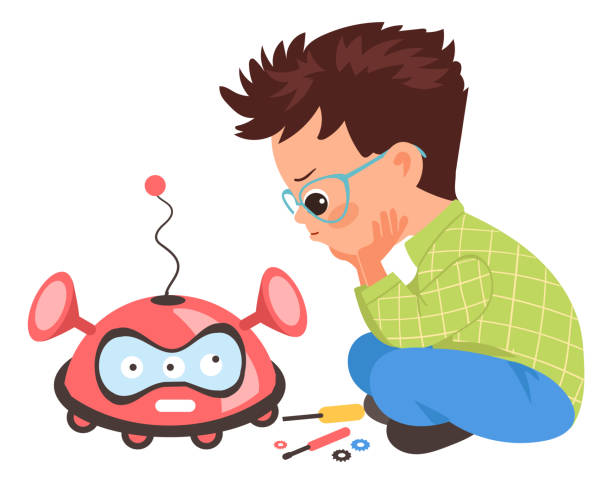
Robotic Toys: Interactive robots that respond to commands, gestures, or programming, fostering learning through technology (e.g., Cozmo, Anki Vector).
Virtual Pets: Digital pets that require care, attention, and interaction, teaching responsibility (e.g., Tamagotchi, Hatchimals).
Voice-Activated Toys: Toys that respond to voice commands or interactions, enhancing engagement and creativity (e.g., FurReal Friends, My Friend Cayla).
Augmented Reality (AR) Toys: Toys that merge digital content with real-world environments, offering immersive experiences (e.g., AR puzzles, interactive books).
Smart Toys: Connected toys that interact with mobile apps or smart devices, offering personalized and evolving play experiences (e.g., Osmo, LEGO Boost).
2. Benefits and Developmental Impact
Cognitive Skills: Enhancing problem-solving, critical thinking, and spatial awareness through interactive challenges.
Social Skills: Fostering communication, cooperation, and empathy in multiplayer or cooperative play settings.
Creativity and Imagination: Stimulating storytelling, role-playing, and creative expression through interactive narratives.
Emotional Development: Teaching empathy, patience, and emotional regulation through virtual interactions.
3. Design and Features
Interactive Interfaces: Touchscreens, sensors, and voice recognition for responsive and dynamic play experiences.
Safety Features: Non-toxic materials, rounded edges, and child-proof designs to ensure safe play.
Educational Content: Integrating educational content and learning objectives into interactive play sessions.
4. Making and Manufacturing
Prototyping: Developing prototypes to test functionality, usability, and safety.
Material Selection: Choosing durable, safe, and age-appropriate materials such as ABS plastic and silicone.
Production Techniques: Utilizing advanced electronics, sensor technology, and software development for interactive features.
5. Care and Maintenance
Battery Management: Monitoring and replacing batteries as needed to ensure uninterrupted play.
Cleaning: Using soft, dry cloths to clean surfaces and avoiding exposure to water or harsh chemicals.
Storage: Storing interactive toys in a cool, dry place to prevent damage from humidity or extreme temperatures.
6. Good and Bad Sides
Good Side:
Engagement: Keeps children actively engaged and entertained with responsive and interactive play.
Learning: Enhances learning outcomes through hands-on experiences and educational content.
Social Interaction: Encourages cooperative play and communication skills in interactive settings.
Bad Side:
Screen Time: Excessive use of screen-based interactive toys may contribute to increased screen time.
Cost: High-quality interactive toys can be expensive.
Privacy Concerns: Connected toys may raise concerns about data privacy and online safety.
7. Market Trends and Consumer Preferences
Tech Integration: Growing demand for toys that integrate with smartphones, tablets, and smart home devices.
Educational Value: Increasing interest in toys that combine entertainment with learning, particularly in STEM and language skills.
Safety and Durability: Consumer preference for durable, safe, and child-friendly designs.
Customization: Demand for personalized and adaptive play experiences tailored to individual learning styles.
8. Customer Preferences
Educational Value: Parents prioritize toys that offer educational benefits alongside entertainment.
Safety: Ensuring toys meet safety standards and are made from non-toxic materials.
Ease of Use: Preferring toys that are intuitive to set up, use, and maintain.
Longevity: Seeking toys that are durable and designed to withstand regular play.
Conclusion
Interactive toys play a crucial role in children's play and learning experiences by combining technology with engaging and educational content. By focusing on innovation, safety, and educational value, manufacturers can create interactive toys that foster cognitive development, social skills, and creativity in young minds. As consumer preferences evolve towards tech-integrated and educational toys, the market continues to expand with new opportunities to enhance children's play and learning journeys.





